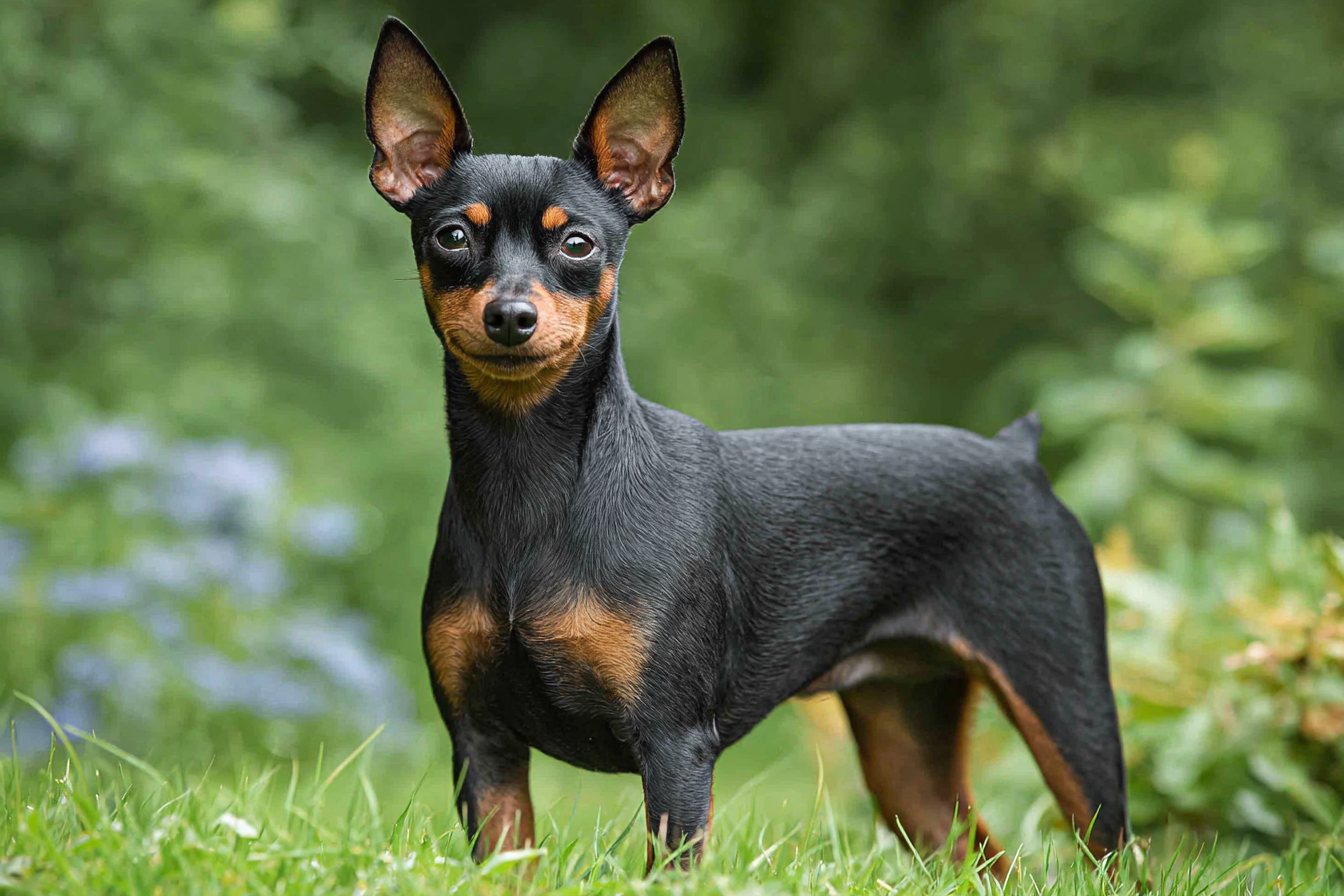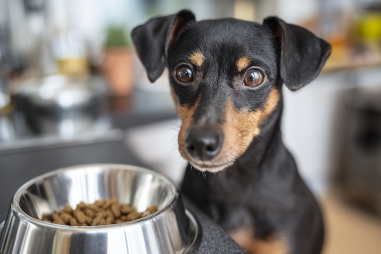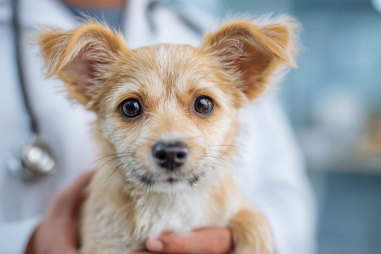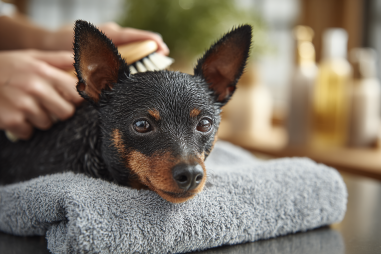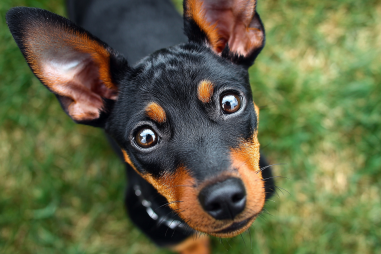The Miniature Pinscher is a small yet remarkably spirited dog breed that has captured the hearts of many dog lovers around the world. Despite its compact size, this breed boasts an energetic personality, striking appearance, and an intriguing history. If you’re considering adding a Miniature Pinscher to your family or simply want to learn more about what makes this breed unique, understanding its key characteristics is essential. From physical traits to temperament and health, this guide will walk you through everything you need to know about the Miniature Pinscher breed.
Introduction to the Miniature Pinscher Breed
Often affectionately called the “Min Pin,” the Miniature Pinscher is a breed that originated in Germany, with roots tracing back several centuries. Though often confused with the Doberman Pinscher due to its sleek, muscular frame and similar coloration, the Miniature Pinscher is a distinct and older breed in its own right. Originally bred as a ratting dog and companion, the Min Pin developed a reputation for being lively, fearless, and remarkably alert.
This breed is known for its bold spirit packed into a small frame, making it a dynamic presence in any household. Miniature Pinschers are celebrated for their confidence and assertiveness, often acting as an excellent watchdog despite their small stature. Their enduring energy levels and playful nature make them a favorite among active families and individuals who enjoy engaging with their dogs on a daily basis.
Physical Traits and Appearance
The Miniature Pinscher is a compact, sturdy dog with well-defined muscle tone and an unmistakably elegant stance. While small in size, they carry themselves with a proud posture reminiscent of much larger dogs.
Key physical characteristics include:
- Size: Typically, Miniature Pinschers stand between 10 to 12.5 inches tall at the shoulder and weigh between 8 to 12 pounds.
- Body: Their bodies are short-backed and square, promoting agility and speed. This build is complemented by a lean, muscular frame that showcases their strength and athleticism.
- Coat: The coat is short, smooth, and glossy, making grooming simple and minimal. Coat colors vary but commonly include solid black, chocolate, blue, and rust, often with rust or tan markings above the eyes, on the cheeks, and on the legs.
- Head and Expression: The Miniature Pinscher has a wedge-shaped head with almond-shaped eyes that express intelligence and curiosity. Their ears may be cropped to stand erect or left natural, which could be floppy or semi-erect.
- Tail: Traditionally, tails were docked, though this practice is becoming less common and is even banned in some countries.
With these traits combined, the Miniature Pinscher presents a distinctive and regal look that commands attention despite its modest size.
Typical Temperament and Behavior
The Miniature Pinscher’s personality is arguably what makes this breed stand out the most. Known for their spirited and fearless nature, Miniature Pinschers are often described as “big dogs in small bodies.” They are lively, energetic, intelligent, and curious, always eager to explore their surroundings and engage with their owners.
Some key temperament traits include:
- Confidence: Min Pins possess a bold demeanor and do not shy away from challenges, often displaying uncertainty with strangers or larger dogs.
- Alertness: These dogs are alert watchdogs and will bark to alert their family of any unusual noises or visitors, making them natural protectors.
- Independence: While Miniature Pinschers love their family and enjoy attention, they also display independent streaks and can sometimes be stubborn during training.
- Energy Level: They have high energy levels and require regular exercise to keep both their mind and body stimulated. Without adequate activity, they may become bored or develop destructive behaviors.
- Sociability: Early socialization is important for this breed to help them interact well with other dogs, pets, and children. They tend to be affectionate with their family but can be wary of new people if not properly introduced.
Owners find Miniature Pinschers to be playful companions who love games and interactive toys, though their strong-willed nature does require consistent, patient training and socialization.
Health Considerations Common to the Breed
Overall, the Miniature Pinscher is a healthy breed with a life expectancy that ranges from 12 to 16 years. However, like all breeds, they have some specific health concerns to be aware of to provide the best care possible.
- Patellar Luxation: This is a common knee joint issue in small breeds where the kneecap can slip out of place, potentially causing pain or mobility issues.
- Legg-Calvé-Perthes Disease: A condition affecting the hip joint leading to degeneration of the femoral head; this can result in limping and pain.
- Hypothyroidism: Some Miniature Pinschers may develop an underactive thyroid, which can be managed with medication.
- Eye Problems: Progressive retinal atrophy (PRA), an inherited condition that can lead to blindness, though this is relatively rare.
- Dental Health: Small breeds tend to have dental issues, making regular dental care crucial to avoid infections and tooth loss.
Regular veterinary check-ups, a balanced diet, and appropriate exercise are vital to maintain the health and vitality of Miniature Pinschers. Responsible breeders will also screen for hereditary conditions to limit risks.
Comparing Miniature Pinschers with Similar Breeds
The Miniature Pinscher is often mistaken for several breeds due to its size, build, and coloring. Understanding the differences can help in selecting the right breed to match your lifestyle.
- Doberman Pinscher: Despite similarities in name and appearance, the Doberman is a much larger breed originally developed for protection, standing between 24 to 28 inches tall. The Miniature Pinscher is not a smaller version of the Doberman but a separate breed entirely.
- Manchester Terrier: This breed has some visual similarities with a similar coloration but tends to be less energetic and possesses a different head shape with longer ears.
- Chihuahua: Similar in size, but Chihuahuas typically have a more rounded skull and a longer coat in some varieties. Their temperament may be less assertive compared to the confident Min Pin.
- Italian Greyhound: This breed shares the sleek coat but is generally taller and longer-legged, with a very different, more reserved temperament.
Choosing a Miniature Pinscher involves appreciating its unique combination of assertiveness, agility, and small size, which sets it apart from other small breeds.
Is the Miniature Pinscher the Right Fit for You?
Miniature Pinschers thrive in environments where they receive plenty of attention, mental stimulation, and physical exercise. They are not ideal for owners looking for a low-maintenance lap dog, as their energy and strong personality require active engagement and consistent training.
They adapt well to apartment living as long as they get regular walks and playtime, but their alert nature means they can be vocal, which is something to consider if you have close neighbors. Families with older children who understand how to interact respectfully with dogs can find an energetic and loyal companion in a Miniature Pinscher.
Before welcoming a Min Pin into your home, consider your lifestyle and willingness to commit to training and exercise. For those who enjoy a lively, intelligent dog with a big personality in a small package, the Miniature Pinscher can be a deeply rewarding pet.

